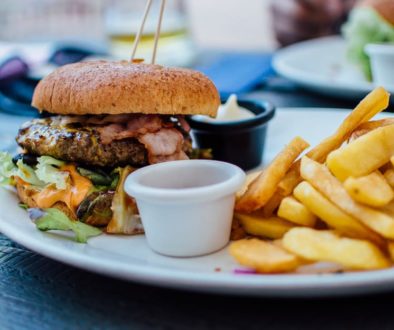Can You Reverse A Cavity?
 Yes, when cavities are small you absolutely can reverse them. I’ll show you when and how…
Yes, when cavities are small you absolutely can reverse them. I’ll show you when and how…
First, let’s talk about what cavities can be reversed and which ones cannot. Cavities aren’t some yes or no state your tooth is in. Cavities start microscopically small with minerals being lost from your teeth, progress to larger demineralized areas, and eventually the outer tooth structure starts to visibly break apart. This process occurs over months to years. Dentists typically fill a cavity once it has broken through the surface of the tooth or has spread far enough under the surface that the outer surface will eventually break down.
Teeth that are only demineralized, without significant breakdown of the inner or outer structure of the teeth can be reversed.
Teeth that have irreversible structural damage (aka a hole or “cavity” in them) cannot be reversed. They need professional intervention in the form of a dentist at that point.
Many other articles will tell you that you can naturally heal all cavities on your own with some mixture of diet change, essential oils, and natural products. Unfortunately I’ve found that the vast majority of people writing these articles don’t really understand how teeth work and tend to have some claims that just aren’t true. I’m a practicing dentist and I’ve studied the scientific research on what actually works to heal teeth. Let’s jump into that now…
We’ve got to fix multiple problems in order to reverse cavities…
Stop the demineralization process
This is the big one. If we can stop the factors that are actively removing minerals from your teeth then your body can usually start the healing process. Demineralization happens when a tooth is exposed to acid. Acids come from a variety of sources such as sodas, most flavored drinks, citrus fruits, bacteria that feed on sugar and carbohydrates, and conditions that cause excess vomiting, .
- Sodas and flavored drinks – These are some of the biggest offenders. Most people I talk to with many cavities have a problem in this area. Cutting these out of your diet entirely will make a massive difference in developing cavities.
- Citrus fruits – For most people, they don’t eat enough of these fruits to make a major difference but some people snack on them all day, long enough to literally dissolve all the enamel off their teeth. I’ve seen people who’ve done this. Everything in moderation. Don’t suck on lemons all day!
- Bacteria that feed on sugar and carbohydrates – There is a reason that sugar and carbohydrates are so highly related to cavities. Bacteria in your mouth sit on your teeth and feed on this sugar (or foods that break down into sugars). As a byproduct they create acid which starts to break down your tooth structure. This process can continue until they literally break down the entire tooth. Brushing and flossing will also help to remove these bacteria from the surface of your teeth and slow this process down.
- Conditions that cause excess vomiting – These include things like bulimia or hyperemesis gravidarum while pregnant. You can’t usually stop this but you should rinse your mouth out with water after each vomiting session (if possible). You’ll also need to aggressively try to stop any other sources of acid in your mouth (see above) and work on getting those minerals back.
Xylitol
Xylitol is an interesting and relatively new chemical. I have other articles on here that talk about it in more depth. Basically, xylitol makes it so that the bacteria in your mouth are inhibited and struggle to actively grow and produce acid. This causes a reduction in cavities.
Add minerals back
Your tooth enamel is composed primarily of hydroxyapatite, which is a hard crystalline material based around calcium. Your body can also substitute fluoride in place of the calcium to create fluroapatite which ends up being more resistant to decay than the original hydroxyapatite.
Fluoride
Most dentists focus on getting fluoride to your teeth in order to remineralize these small areas so that they don’t turn into decay. People who have no exposure to fluoride in either water supplies, toothpaste, or other applications have much higher rates of decay. It is that important. If you don’t like the idea of any exposure to fluoride, you’re really going to struggle to remineralize those areas of decay. For a middle ground on the fluoride issue, check out my article where I explain my stance on fluoride in the water supply vs topical applications like toothpaste.
If you didn’t read that last article, I’ll cut to the chase here. I don’t particularly care if you are drinking fluoridated water. I do care if you are using fluoride toothpaste and having professional fluoride treatments. These types of treatments get fluoride to your teeth with minimal overall exposure to your body (unlike fluoride in water supplies).
Saliva
Your body will also naturally try to add minerals back to your teeth. Your saliva is a natural source of calcium and you need proper saliva flow to wash bacteria away and add minerals back. It isn’t unusual for people with dry mouth (such as those on a lot of medications) to struggle with cavities. Make sure you are getting good calcium sources in your diet so that your body has enough. Chewing sugar free gum is one great way to stimulate saliva flow and reduce your risk for cavities.
Things That Don’t Work To Reverse Cavities:
- Oil Pulling – I’ve written another article about this. It doesn’t work and is a waste of time. Essential oils may be natural but they don’t cure cavities.
- Homemade remineralizing solutions
- Adding Fat Soluble vitamins to your diet (A and D are commonly cited)
Let’s Recap What We Need to Do to Reverse Cavities:
- Avoid soda and flavored drinks.
- Don’t eat acidic foods or drinks all day.
- Minimize the exposure your teeth get to sugars and carbohydrates (I recommend a quality diet of some combination of whole foods that includes fruits, vegetables, lean meats, good fats, and small amounts of whole grains – It is good for your teeth and your overall health).
- If you do eat sugar or carbs, include it with a meal and don’t snack on it throughout the day. Remember we are trying to have as little exposure to your teeth as possible.
- Brush and floss twice a day.
- Consider using a xylitol product, especially as chewing gum.
- Use a topical fluoride containing product such as fluoride toothpaste.
It’s not magic but it does work. It doesn’t take big changes to make a significant difference in how your teeth are taking up and losing minerals.



